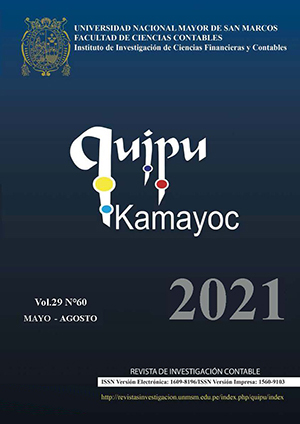Diversification of investment portfolios with cryptocurrencies
DOI:
https://doi.org/10.15381/quipu.v29i60.20471Keywords:
Cryptoassets, financial innovation, investment portfolios, portfolio optimizationAbstract
Objective: To experimentally organize investment portfolios with crypto assets under the modern theory of investment portfolio structuring of Markowitz. Method: The research was quantitative and experimental, explaining the process of structuring investment portfolios with cryptocurrencies under Markowitz's theory. Results: It was observed that the most pronounced trading period occurred from 2017 to 2018, where a higher profitability corresponds to Ethereum, followed by Bitcoin and Ripple, consequently Ethereum with the highest indicator volatility. The efficient portfolio option was obtained when 70% was invested in Bitcoin, 14% in Ethereum, 6% in Ripple and 10% in Thether and as an effect of the diversification of investment portfolios, the inverse behavior of volatility was verified. Conclusions: The study in reference demonstrated the effect of the number of assets in the formation of the investment portfolio in reducing volatility, and the options provided by the map of the efficient frontier for investors to opt for the options that better match the risk and return expectations.
Downloads
Downloads
Published
Issue
Section
License
Copyright (c) 2021 Pedro Pablo Chambi Condori

This work is licensed under a Creative Commons Attribution 4.0 International License.
AUTHORS RETAIN THEIR RIGHTS:
a. Authors retain their trade mark rights and patent, and also on any process or procedure described in the article.
b. Authors retain their right to share, copy, distribute, perform and publicly communicate their article (eg, to place their article in an institutional repository or publish it in a book), with an acknowledgment of its initial publication in Quipukamayoc .
c. Authors retain theirs right to make a subsequent publication of their work, to use the article or any part thereof (eg a compilation of his papers, lecture notes, thesis, or a book), always indicating the source of publication (the originator of the work, journal, volume, number and date).






